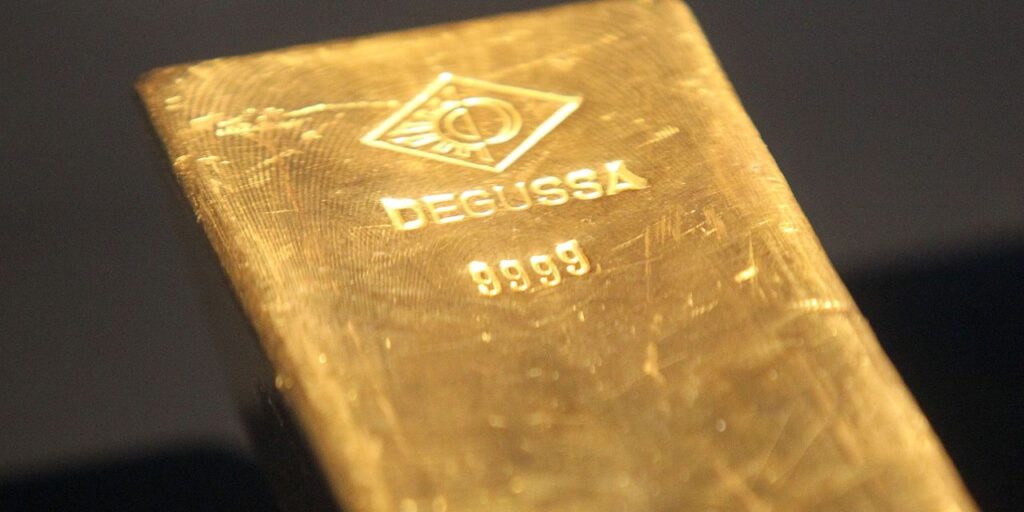Gold purchases by global central banks reached a record for the first nine months of this year, according to a report from the World Gold Council released Tuesday.
“In the current, macroeconomic and uncertain geopolitical context, central banks have turned to gold for its return characteristics, liquidity and safety,” Joe Cavatoni, market strategist for Americas at the World Gold Council, told MarketWatch.
Demand for gold from central banks year to date through the third quarter was 14% ahead of the same period last year, at a record 800,000 metric tons, according to the World Gold Council. That’s the highest on record for the nine-month period.
“With central-bank demand resuming its voracious pace after a slower Q2, we expect the annual total to approach last year’s record,” the report said. There’s also “an outside possibility it will exceed that figure.”
The year-to-date purchases compare with 2022’s full-year global central-bank net purchases of 1,136 metric tons.
The World Gold Council’s annual central-bank survey findings revealed that the key reasons reserve managers hold gold is for “gold’s role as an inflation hedge, diversification benefits and its performance during times of crisis,” Cavatoni said. These factors “support the 13-year trend of net purchases that continues in 2023 at a record pace.”
It now seems all but certain that central banks are on course for “another colossal year of buying,” the World Gold Council’s report said, adding that the strength of buying has “to some degree” exceeded its expectations.
Collectively in the third quarter, central banks bought 337 metric tons. The quarter’s central-bank demand was the third-highest based on records going back to 2000, Cavatoni said. “If the ongoing economic and uncertain geopolitical context remain in place, we expect this to be supportive of sustained and significant central bank demand.”
The People’s Bank of China, which increased its gold reserves by 78 metric tons during the third quarter, regained the title of the largest buyer globally, the World Gold Council report said. Since the start of the year, China’s central bank has increased its gold holdings by 181 metric tons, to 2,192 metric tons.
The National Bank of Poland (NBP) added a further 57 metric tons to the 48 metric tons it bought in the second quarter, bringing its total year-to-date gold accumulation to 105 tons. The report suggested that Poland’s purchases may continue, pointing out that in early October that NBP President Adam Glapiński said the national bank would continue to buy gold and that the “dream” is to reach 20% of total reserves. It currently holds 334 tons of gold, according to the World Gold Council.
Global investment demand for gold in the third quarter, meanwhile, was at 157 metric tons, which was only half of its five-year quarterly average of 315 metric tons, the report said.
Still, total third-quarter investment demand marked a 56% year-on-year increase from the third quarter of 2022, which was the weakest quarter for 18 years, at just 100 metric tons.
Within the investment-demand segment of the market, gold exchange-traded fund outflows slowed in the third quarter of this year, but bar and coin demand rebounded in both India and China, bringing up the overall investment-demand figures, said Cavatoni.
Year on year, bar and coin investment for the quarter was up 21% in India and up 16% in China, the report said.
Still, total global third-quarter bar and coin investment was down 14% year on year at 296 metric tons, while global gold exchange-traded fund investment saw a sixth straight quarter of outflows, with holdings down 139 metric tons in the latest quarter, data showed.
The “somewhat surprising” strength in bar and coin demand in China and India is likely to continue, but “with different drivers,” the report said. “Economic and geopolitical uncertainty appears to be spurring safe-haven demand in China, while economic strength in India is yielding wealth-driven buying.”
Read the full article here



